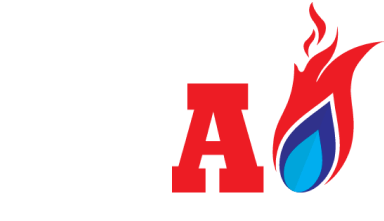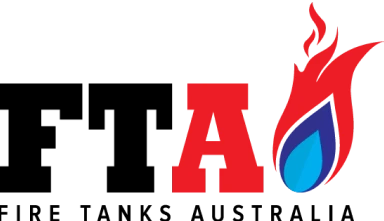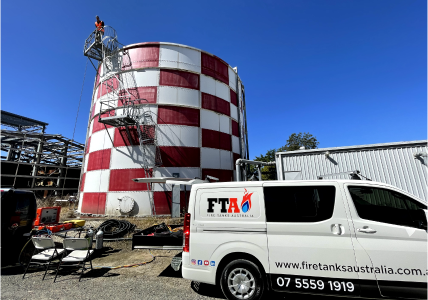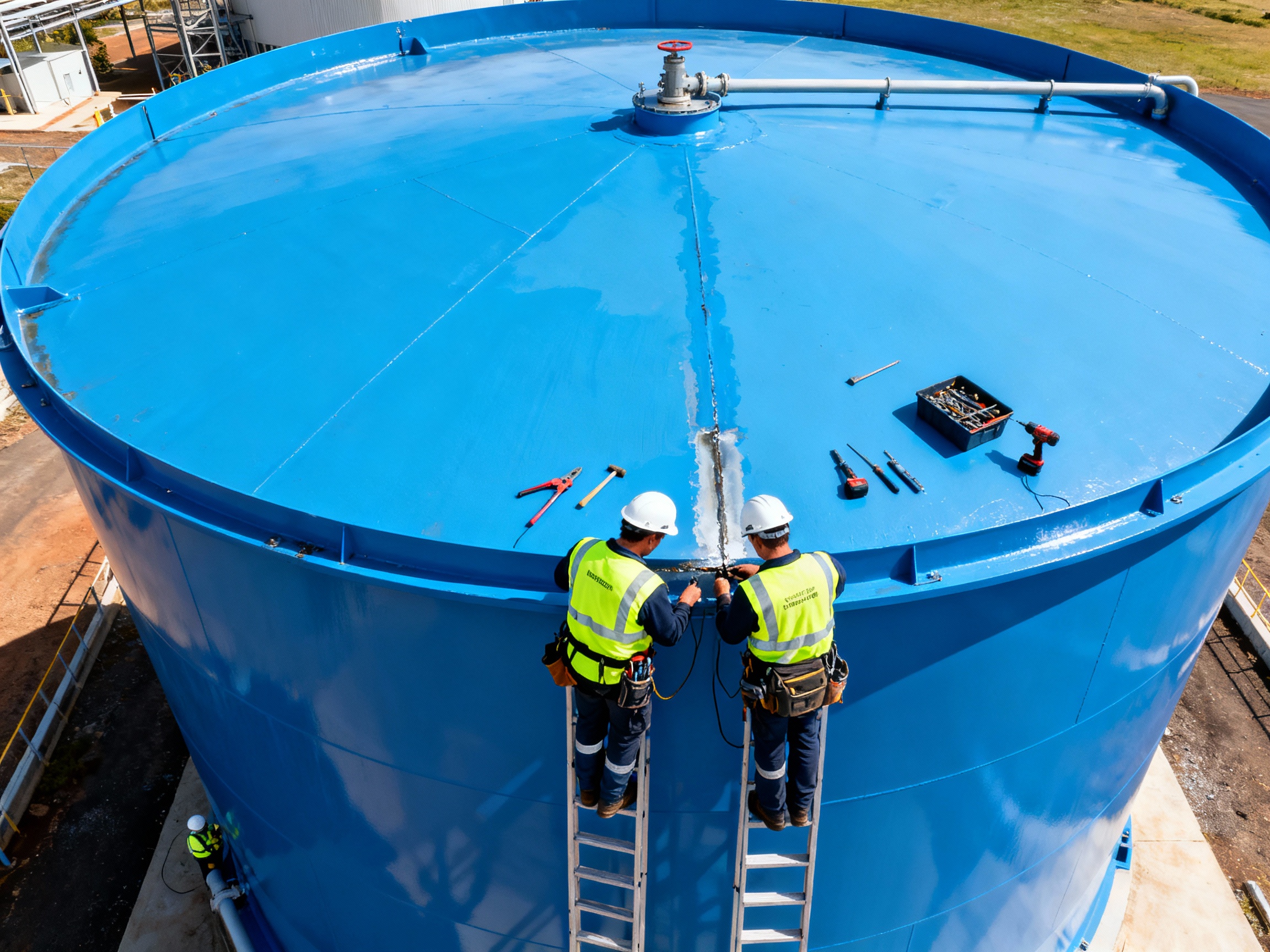Why Fire Tank Cleaning is an Essential Investment
A fire tank is one of the most important safety assets a business can have. It provides the critical water supply needed to suppress fires in commercial, industrial, and public facilities. But like any piece of infrastructure, a fire tank needs regular upkeep to stay reliable.
Under AS1851-2012: Routine Service of Fire Protection Systems and Equipment, fire tanks must be inspected and cleaned on a regular schedule. Compliance protects people, property, and ensures insurance coverage remains valid.
The question most facility managers ask is: “How much does fire tank cleaning cost?” Let’s break it down.
Fire Tank Cleaning Costs in Australia: Average Prices
In Australia, fire tank cleaning typically ranges from $2,000 to $6,000+ per service.
The cost depends heavily on the tank’s size, accessibility, contamination, and compliance requirements. A small, easily accessed poly tank may cost far less to clean than a large, concrete industrial reservoir requiring divers.
Cost-Saving Through Modern Cleaning Methods
Traditional fire tank cleaning often required draining the entire tank, which is costly, time-consuming, and leaves a facility without fire protection during the process. By contrast, modern methods using licensed commercial divers allow cleaning while the tank stays online, avoiding downtime and reducing refill costs. This not only reduces downtime but also lowers overall costs by avoiding water disposal and refill expenses.
Factors That Influence Fire Tank Cleaning Costs
Several factors impact the final price of a fire tank cleaning service:
- Tank Size & Capacity: Bigger tanks need more time, equipment, and divers, which raises service costs.
- Tank Material: Concrete, steel, and poly tanks each have unique cleaning requirements that affect time and cost.
- Access & Location: Tanks in remote areas or with confined entry points may require specialist crews and safety protocols.
- Level of Contamination: Tanks with heavy sediment, algae, or debris will take longer to clean and may need advanced techniques.
- Compliance Reporting: AS1851 requires detailed logbooks and reports. Video footage from divers may add to the service scope.
Hidden Costs Businesses Often Overlook
Beyond the cleaning invoice, businesses should also factor in indirect costs:
- Downtime Risks – Traditional cleaning means draining the tank and leaving a site unprotected. Using divers avoids shutdowns and reduces risk.
- Emergency Cleaning – Reacting to contamination, blockage in the pump / system or audit failures costs significantly more than routine maintenance.
- Insurance Risks – Insurers may deny claims if tanks are not maintained to AS1851 standards.
Preventative budgeting helps businesses avoid these hidden costs.
Industry Benchmarks and Budget Planning
Across Australia, industries like healthcare, aged care, and aviation face stricter compliance checks due to the higher risks associated with fire safety in these environments. These sectors should budget on the higher end of the $2,000–$6,000 range and consider quarterly inspections. For warehouses, commercial facilities, and councils, annual budgeting is usually sufficient — provided sediment and contamination levels are monitored between services.
Budgeting for Fire Tank Cleaning
To build an effective fire tank maintenance budget, consider these points:
- Follow AS1851 Guidelines – Inspections are required annually; cleaning as needed.
- Set Aside Annual Allowance – Allocate funds for routine maintenance to avoid emergency callouts.
- Consider Service Contracts – Long-term agreements often reduce per-service costs and spread expenses evenly.
- Think Preventative – Cleaning before major contamination develops is cheaper and safer.
Why Choose Fire Tanks Australia
At Fire Tanks Australia, we specialise in AS1851-compliant fire tank cleaning and reporting. Our clients benefit from:
- Licensed Commercial Divers – Full AS1851- compliant cleaning and inspection without draining the tank.
- Licensed Plumbers / Wet fire certifiers – Ensures compliance with all mandatory Plumbing and Fire standards.
- Detailed Compliance Reports – Documentation included for audits and insurance.
- Preventative Solutions – Helping businesses budget smarter and avoid unexpected costs.
Case Study: One facility faced a $10,000+ emergency cleaning bill after failing an AS1851 audit. By moving to scheduled cleaning with Fire Tanks Australia, they cut annual costs by 40% and passed every compliance check.
Long-Term ROI of Regular Cleaning
While the upfront cost of routine cleaning may seem high, the return on investment (ROI) is clear. Regular maintenance extends the lifespan of a fire tank, reduces repair costs, and ensures uninterrupted compliance. Over 10 years, facilities that budget and service regularly spend 30–40% less than those relying on emergency cleanings and repairs.
Conclusion
Fire tank cleaning is a necessary cost for safety, compliance, and risk management. With average services ranging from $2,000–$6,000+, the best approach is to budget proactively and avoid emergency expenses.
At Fire Tanks Australia, we make compliance straightforward, cost-effective, and stress-free.
Get in touch with Fire Tanks Australia today for a tailored fire tank cleaning and compliance quote to keep your facility safe and AS1851-compliant.
FAQs
Q1. How much does fire tank cleaning cost in Australia?
Most businesses can expect costs between $2,000 and $6,000+, depending on tank size, material, contamination level, and location.
Q2. What factors affect fire tank cleaning costs?
Tank size, accessibility, contamination level, and compliance reporting requirements.
Q3. Is regular cleaning cheaper than emergency cleaning?
Yes. Routine fire tank cleaning is far cheaper than emergency works or failed audit rectifications..
Q4. Do cleaning services include AS1851 compliance?
Yes. Professional providers like Fire Tanks Australia include AS1851 logbooks, compliance reports, and video evidence with every service.




